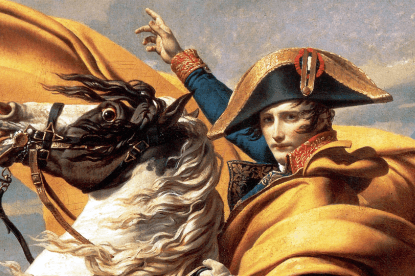Painting:Qldz9qjflpu= Napoleon

The painting “Napoleon” serves as a compelling lens through which to examine the intricate interplay of power, ambition, and artistic expression during a transformative period in history. Through its sophisticated use of chiaroscuro and a carefully chosen color palette, the artwork not only illustrates Napoleon’s formidable presence but also invites reflection on the broader implications of his legacy. As we consider the historical context and the techniques employed by the artist, one must ponder how this piece continues to resonate in contemporary discussions about authority and identity. What might this suggest about our current societal values?
Historical Context of Napoleon
How did the tumultuous political landscape of late 18th and early 19th century Europe shape the figure of Napoleon Bonaparte?
The chaos following the French Revolution provided fertile ground for Napoleon’s rise, as he skillfully navigated political factions and seized power.
His military campaigns not only expanded French territory but also showcased his strategic brilliance, ultimately redefining European power dynamics and aspirations for freedom.
See also: No Demo Reno Lawsuit Update
Overview of the Painting
Depicting a moment of triumph and authority, the painting of Napoleon captures the essence of his character and the era he defined.
The rich color symbolism evokes themes of power and ambition, while the emotional expression in Napoleon’s gaze invites contemplation of his complex legacy.
This artwork not only immortalizes a leader but also reflects the aspirations for freedom inherent in his time.
Artistic Techniques and Styles
Often characterized by its dramatic use of light and shadow, the painting of Napoleon employs chiaroscuro techniques to enhance the sense of depth and dimensionality.
The artist’s meticulous brush techniques create texture and movement, while color symbolism imbues the composition with emotional resonance.
Rich reds and deep blues signify power and loyalty, inviting viewers to engage with the narrative on a profound level.
Impact and Legacy of the Artwork
The dramatic techniques employed in the painting of Napoleon not only contribute to its aesthetic appeal but also significantly shape its impact and legacy within the art world and beyond.
This artwork serves as a potent symbol of political power and ambition, encapsulating the cultural significance of its era.
Its political symbolism resonates, influencing subsequent generations and inspiring dialogues about leadership, authority, and national identity.
Conclusion
The painting “Napoleon” serves as a poignant testament to a leader whose ambitions shaped the course of history. Through its masterful use of chiaroscuro and rich color symbolism, the artwork captures the essence of a complex figure, embodying both the grandeur and the burdens of power. This piece transcends mere representation, inviting reflection on the enduring themes of leadership and national identity, thus solidifying its place as a revered cultural artifact that continues to resonate across generations.




